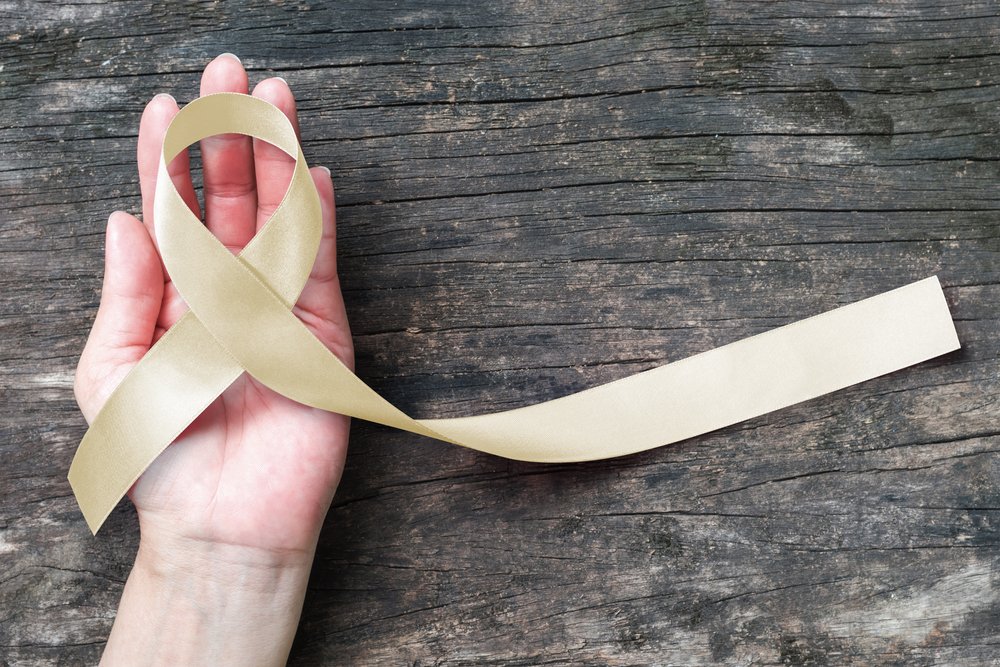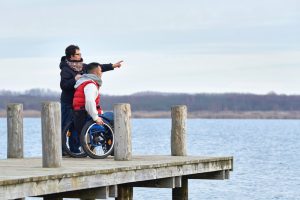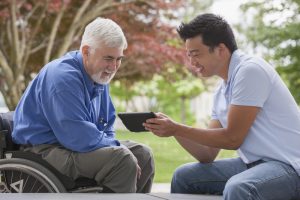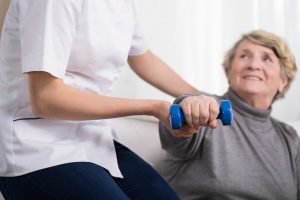August is Spinal Muscular Atrophy (SMA) Awareness month. SMA impacts approximately 4 people in every 100,000 throughout the United States, and for some seniors who deal with inactivity due to physical, balance, cognitive, or other challenges, one big risk they may face is spinal muscular atrophy.
Unless you know someone with spinal muscular atrophy, it’s quite possible you’ve never heard of the disease – however, 1 in 50 people carry the disease, and 1 out of every 6,000 to 10,000 people develop it.
If you have a family member with SMA, learning more about the disease can help you be prepared for the future and ensure they receive the best possible care. In particular for those who are family caregivers, being aware of spinal muscular atrophy and its issues can help you to respond effectively. Awareness gives caregivers the ability to react to new challenges and demands in a way that is effective, personalized, and fits with your and your elderly loved ones’ care goals.
Unicity Healthcare would like to provide invaluable information about this important awareness month, in the hopes of helping those whose loved ones may be diagnosed with Spinal Muscular Atrophy, as well as how we can help.
What Is Spinal Muscular Atrophy?
Spinal Muscular Atrophy (SMA) refers to a group of genetic conditions that cause muscle weakness and atrophy in children and adults. SMA is a disease that affects the body’s ability to control muscle movements by attacking and destroying the lower motor neurons. “Atrophy” means that the mass and size of muscles is reduced, also be described as muscle “wasting.” Motor nerves in the spinal cord control the muscles that are used for breathing, crawling, walking, head and neck control, and swallowing. SMA is characterized by muscles that are shrinking due to extended inactivity, however, this condition does not occur in all people who are inactive. Instead, it is a genetic, progressive disease that directly impacts the motor neurons of the brain stem and spinal cord.
Causes Of SMA
SMA is characterized by the loss of nerve cells in the spinal cord called motor neurons and classified as a motor neuron disease. The most common form of SMA (types 1-4) is caused by a defect (mutation) in the SMN1 gene on chromosome 5, which is responsible for creating a protein needed for healthy motor neurons. When there isn’t enough of the SMN protein, the lower motor neurons lose vitality and muscles grow weak and waste away. The trunk and upper arms and legs are most affected by the disease.
Types Of Spinal Muscular Atrophy
Spinal muscular atrophy is categorized into 4 types: using the age of onset, the severity of the symptoms, and the progression of the disease.
The four types of spinal muscular atrophy are:
- Type I: Type I SMA is also called Werdnig-Hoffman disease. This form appears at birth or shortly after.
- Type II: Type II SMA becomes apparent between 6 and 12 months of age.
- Type III: Type III SMA is also called Kugelberg-Welander disease and develops between the ages of 2 and 17 years.
- Type IV: Type IV SMA occurs most frequently in adults between the thirties and fifties. While the symptoms of this form are less severe than those of the other forms, the challenges your aging parent might face if they experience this condition can be difficult and compromise their health and well-being.
In our senior adults, the symptoms of SMA Type IV may include:
- Progressive limb weakness that usually begins in the muscle groups of the thighs and then the upper arms
- Slow, but progressive muscle wasting
- Decreased reflexes in the deep tendons
- Very slow decrease in the ability to walk or move the lower limbs
- Cramping or marked stiffness in the muscles
- Twitching or spasms in the muscles
- Marked weakness
Additionally, aside from the main types, there are other forms of SMA. Kennedy’s Disease occurs somewhere between the ages of 15 and 60 years. The disease is progressive and usually starts with weakened muscles in the face, tongue, and jaw. Over time, the muscles in the arms and legs also become weak and the person loses feeling in their hands and feet.
Diagnosis Of SMA
Spinal muscular atrophy is a rare disease and often some medical professionals are not familiar with the condition. If your seniors are at risk of this disease, it is vital you seek out assistance from the right professionals.
The first steps in diagnosis of a neuromuscular disease are usually an in-office physical examination and family history, with some simple tests to distinguish spinal muscular atrophy (SMA) from similar conditions (such as muscular dystrophy). Diagnosis then also be determined through blood testing to detect a specific gene, a muscle biopsy, or electromyography-electrical testing of the muscles.
In some cases, doctors may order a muscle biopsy, which involves taking a small sample of muscle tissue and looking at it under a microscope. Other tests sometimes used to diagnose SMA include one that measures nerve conduction velocity (the speed with which signals travel along nerves) and one that measures the electrical activity in muscle, called anelectromyogram, or EMG. Nerve conduction velocity tests involve sensations that feel like mild electric shocks, and EMGs require that short needles be inserted in the muscles.
Treatment of Spinal Muscular Atrophy
If your loved one is diagnosed with SMA, their treatment team may include a variety of professionals such as:
- Occupational therapists
- Neurologists
- Exercise therapists
- Physiotherapists
- Dietitians
These professionals can work with your loved one to create an approach that involves exercises, pain relief, muscle stimulation, and activities that encourage ongoing muscular health. The most important thing to keep in mind when it comes to caring for a senior coping with SMA is preventing further muscle loss and maintaining the health of the muscle that is still left.
SMA Advocates for families have developed a Family Guide to help clients and families to understand and advocate for best practice treatment. To learn more, click here: http://mda.org/publications/spinal-muscular-atrophy-care-guidelines
While there is no cure for this disease, using these approaches can help to slow the progression of the disease and keep the body healthier and stronger for longer.
Tips For Caring For Someone With SMA
The most important step for those diagnosed with SMA is to stay in tune with the changes of their body and continue to take preventative measures for SMA’s side effects. It is also important to stay as active as possible to keep joints and muscles healthy. Mental and emotional health is also key when dealing with SMA — a positive outlook can have positive effects on the mind, and body.
For those caring for a loved one with SMA, it is vital to stay informed, as well as being supportive and understanding. The care provided to those with SMA can make a tremendous difference in their ability to cope with SMA and remain safe and healthy throughout their later years living with the condition.
Some other tips to help the caregivers whose elderly loved one is living with spinal muscular atrophy are:
- Provide physical support. Seniors living with SMA are likely to deal with mobility challenges as their muscles weaken, which puts them at greater risk of suffering falls. Physical support from you or from an elder home care services provider can help your parent to maintain their activity level while staying safer.
- Encourage physical therapy. Physical therapy can be extremely beneficial to a senior who is dealing with physical challenges associated with their SMA. Having those with SMA participate in PT will help them to stay active more safely and reduce their pain and discomfort.
- Pay attention to respiratory issues. Many adults with SMA struggle with respiratory muscle problems. They might have difficulty with breathing, or can struggle with swallowing. These conditions puts them at risk of aspirating food and fluids while eating and drinking, which puts them at serious risk of choking. This aspiration also increases their risk of developing pneumonia, which can be extremely serious for elderly adults.
When To Consider Home Health Care
When your loved one with SMA needs more support and assistance than their family is able to provide, home health care providers can assist your aging parent so that they remain happy, healthy, comfortable, and safe throughout their later years. The highly personalized nature of these services enables the care provider to address your parent’s individual needs, challenges, and limitations.
At Unicity Healthcare we provide non-medical and medical homecare services to our clients. Our services are customized and range from a few hours per day to 24/7 (live-in). Our licensed, trained and experienced Home Health Aides can assist you or your loved one with maintaining a daily routine, from bathing, eating, socializing, or simply going for a walk outside. They can also perform light housecleaning, help with meals, and other household tasks which may become difficult for your family member as muscles atrophy.
* * * *
We hope that this blog helps in understanding the many challenges faced by people living with SMA. We also hope that the tools and resources shared here play some role in improving quality of life for all who fight SMA every day.




